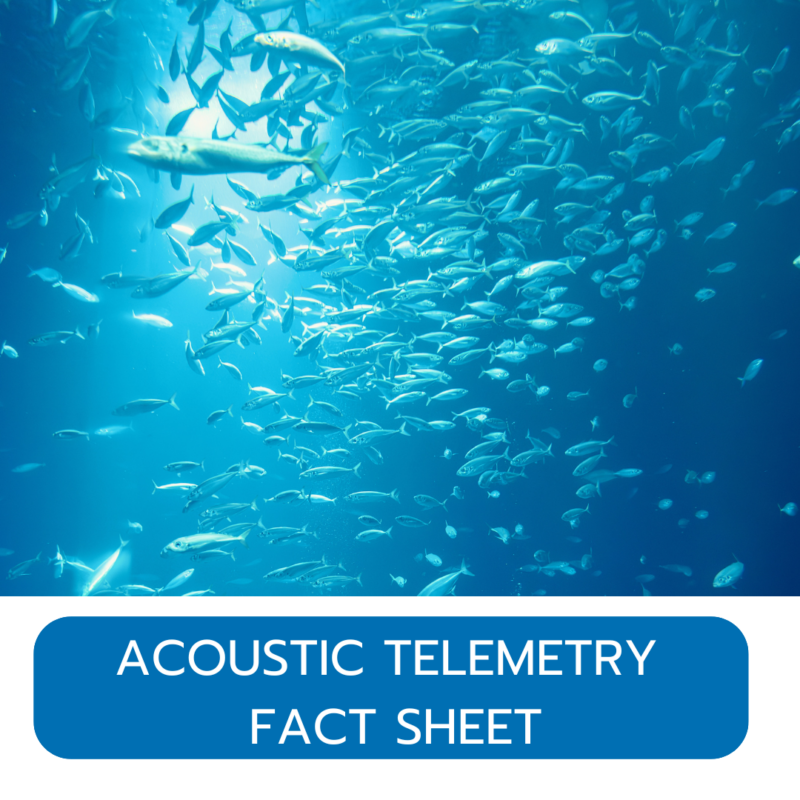Acoustic Telemetry
ROSA, the Regional Wildlifc Science Collaborative (RWSC) and the Atlantic Telemetry Cooperative Network (ACT) are leading the effort to coordinate deployment of acoustic telemetry along the East coast to support data management and analysis in offshore wind areas. As part of their efforts, ROSA, RWSC, and ACT are convening federal and state agencies, offshore wind companies, and eNGOs to coordinate and collaborate on acoustic telemetry efforts and standardization.
Coordinating Acoustic Telemetry Data Gathering
Many marine species exhibit ranges and distributions that traverse man-made boundaries. For migratory, protected, and recreationally and commercially important species, tools that assess movement and presence or absence must be implemented at broad scales to accurately characterize animal distribution and potential range shifts, understand cumulative effects, and separate these
effects from other influences. Acoustic telemetry networks enable cooperative research for these species at broad scales.
Why Acoustic Telemetry
When deployed, acoustic telemetry reveals important information about species movement that informs fisheries management and conservation efforts. In U.S. Atlantic waters, this method is increasingly being used as a cost-effective way to
gather data on species in and around offshore wind areas.
ROSA and RSWC offshore wind development members have expressed interest in using acoustic telemetry data to inform the successful development and operation of their individual projects and to deepen understanding of potential cumulative effects of OSW development.
For accurate analysis of data, the collection of acoustic telemetry data must adhere to standards for methods and for data and metadata formats.
How Acoustic Telemetry Works
An electronic tag is placed on marine animals who are then released back into the ocean. The tag pings out a unique ID code at regular intervals.
When a tagged animal travels within range of a receiver, its unique ID number, the date, and time are recorded. Arrays of acoustic receivers record the presence of tagged animals, along with other environmental information, that is transmitted by the tags or gathered by additional sensors affixed to the receiver stations.
Receivers are periodically retrieved and detection data are downloaded and combined with tag and receiver metadata to understand animal movement.
